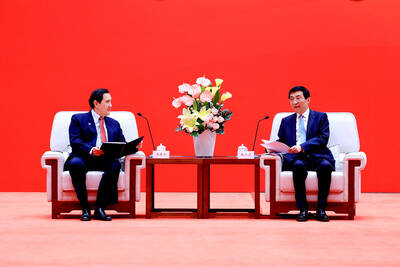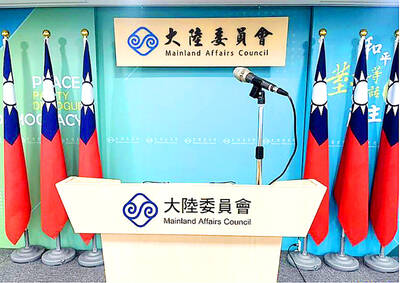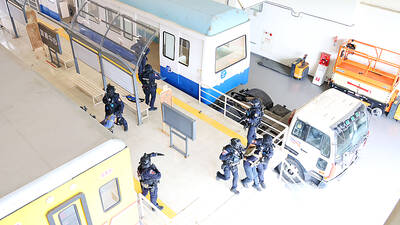With the world's top two retailers faltering in the tough Japanese market, local retail chains are refining their approach to the budget-conscious and discerning Japanese consumer.
Despite the novelty of the megastore most Japanese still prefer frequent shopping at smaller local shops rather than weekly one-stop shopping to stock up their small refrigerators and pantries.
And fashion-conscious young Japanese are more likely to buy clothing at upscale department stores or less expensive specialty shops like GAP, Uniqlo and Muji, rather than the megastore.
"I sometimes buy clothes [at a megastore] for my child and some casual wear for myself, but not clothes for going out," said Miyuki Osaku, a 31-year-old housewife in Tokyo.
Kimiharu Oba, 28, an office worker, and his wife Satomi, 25, said they can't find their style of clothing at megastores and prefer to shop at department stores.
"The only clothing I buy at a big supermarket store is stockings. Their clothes are not cool at all," said a young female shopper strolling in Tokyo's posh Ginza district, home to every brand name in the world.
The nation's top retailers in the megastore or general merchandising category are also struggling to lure shoppers to their food sections.
"I go to smaller shops in the old shopping arcades where you can often find cheaper and fresher food and good quality clothes," said Daisuke Odagiri, 33, who lives near a Seiyu store in central Tokyo.
Carrefour SA of France, the world's second-largest retailer, has pulled out of Japan after four years in the red, selling all of its eight megastores to Japan's biggest retail group, Aeon Co Ltd.
Wal-Mart Stores Inc, the largest retailer in the world, has seen its "everyday low price" philosophy flop with Japanese shoppers who demand a wider range of higher quality goods to choose from.
Wal-Mart holds a 37.8 percent stake in the medium-sized supermarket chain Seiyu, which has posted net losses in the past two years of Wal-Mart style merchandising in Japan, the world's second-largest consumer market.
Responding to consumer's preferences, Japanese retailer Ito-Yokado has set up a research center to create new brands and merchandising, headed by the legendary Yukio Fujimaki, known for his successful purchasing strategy at the upscale department store Isetan.
Ito-Yokado, Japan's second-largest retailer, started in 1920 as a small shop in downtown Tokyo selling western attire and has grown into a group that includes 180 superstores in Japan and China, the Seven-11 convenience store chain and a bank.
"In the past it was said that Japanese [stores] needed lower-priced merchandise, modeling the success of discount outlets in the US," said Toshifumi Suzuki, chairman and chief executive officer of Ito-Yokado group.
"But emulating the US style will not lead to success in Japan due to the totally different economic structures in the two countries," he said.
The current front-runner, Aeon, began in 1758 selling kimono fabric and accessories and now operates over 300 JUSCO stores in Japan, China, Thailand and Malaysia.
It remains in expansionist mode with its takeover of Carrefour's hypermarkets, the term for general merchandizing which combines its supermarkets with department stores.
But Aeon is also responding to calls for improved quality.
"We will concentrate more on malls, and in merchandizing policy we will pursue quality as well as low prices," said Manabu Ohshima, an Aeon spokesman.
There are on average 91 grocery stores, supermarkets or convenience stores for every 10,000 people in Japan, far above the 54.8 in the US, 52.2 in Britain and 62.3 in France, according to trade ministry data.
Easing deflation and an increase in jobs in Japan would seem to bode well for consumer spending, but major retailers operating general merchandise or megastores have been struggling to achieve stable profits.

CHIP WAR: The new restrictions are expected to cut off China’s access to Taiwan’s technologies, materials and equipment essential to building AI semiconductors Taiwan has blacklisted Huawei Technologies Co (華為) and Semiconductor Manufacturing International Corp (SMIC, 中芯), dealing another major blow to the two companies spearheading China’s efforts to develop cutting-edge artificial intelligence (AI) chip technologies. The Ministry of Economic Affairs’ International Trade Administration has included Huawei, SMIC and several of their subsidiaries in an update of its so-called strategic high-tech commodities entity list, the latest version on its Web site showed on Saturday. It did not publicly announce the change. Other entities on the list include organizations such as the Taliban and al-Qaeda, as well as companies in China, Iran and elsewhere. Local companies need

CRITICISM: It is generally accepted that the Straits Forum is a CCP ‘united front’ platform, and anyone attending should maintain Taiwan’s dignity, the council said The Mainland Affairs Council (MAC) yesterday said it deeply regrets that former president Ma Ying-jeou (馬英九) echoed the Chinese Communist Party’s (CCP) “one China” principle and “united front” tactics by telling the Straits Forum that Taiwanese yearn for both sides of the Taiwan Strait to move toward “peace” and “integration.” The 17th annual Straits Forum yesterday opened in Xiamen, China, and while the Chinese Nationalist Party’s (KMT) local government heads were absent for the first time in 17 years, Ma attended the forum as “former KMT chairperson” and met with Chinese People’s Political Consultative Conference Chairman Wang Huning (王滬寧). Wang

CROSS-STRAIT: The MAC said it barred the Chinese officials from attending an event, because they failed to provide guarantees that Taiwan would be treated with respect The Mainland Affairs Council (MAC) on Friday night defended its decision to bar Chinese officials and tourism representatives from attending a tourism event in Taipei next month, citing the unsafe conditions for Taiwanese in China. The Taipei International Summer Travel Expo, organized by the Taiwan Tourism Exchange Association, is to run from July 18 to 21. China’s Taiwan Affairs Office spokeswoman Zhu Fenglian (朱鳳蓮) on Friday said that representatives from China’s travel industry were excluded from the expo. The Democratic Progressive Party government is obstructing cross-strait tourism exchange in a vain attempt to ignore the mainstream support for peaceful development

ELITE UNIT: President William Lai yesterday praised the National Police Agency’s Special Operations Group after watching it go through assault training and hostage rescue drills The US Navy regularly conducts global war games to develop deterrence strategies against a potential Chinese invasion of Taiwan, aimed at making the nation “a very difficult target to take,” US Acting Chief of Naval Operations James Kilby said on Wednesday. Testifying before the US House of Representatives Armed Services Committee, Kilby said the navy has studied the issue extensively, including routine simulations at the Naval War College. The navy is focused on five key areas: long-range strike capabilities; countering China’s command, control, communications, computers, cyber, intelligence, surveillance, reconnaissance and targeting; terminal ship defense; contested logistics; and nontraditional maritime denial tactics, Kilby